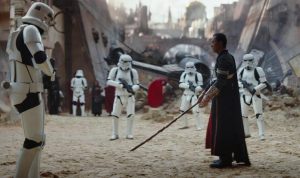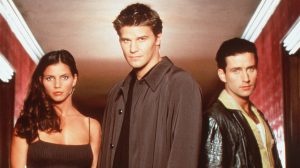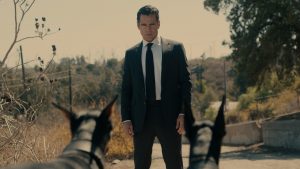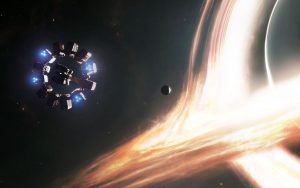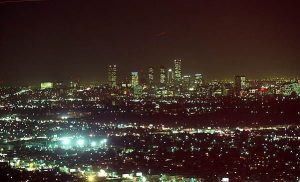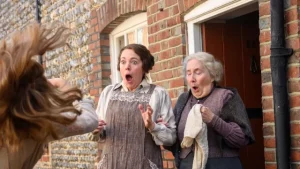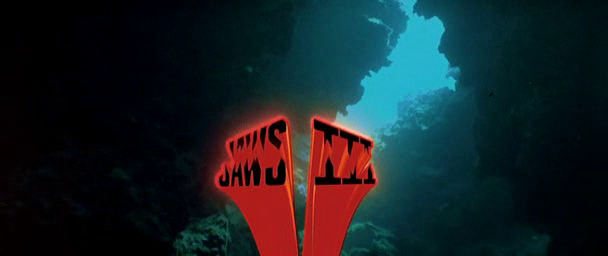
So just a couple of days ago, when shared with you an Unpopular Movie Opinion that Jaws 3 (or Jaws 3D, if you prefer) wasn’t actually as bad as its reputation some of you thought we made some good points, but almost everyone referred back straight away to the terrible VFX and the sub-par 3D experience.
How on Earth did a major blockbuster manage to make it to the screen with VFX like that? How can a shark movie fumble its shark so badly? Well, in the article we did talk about the long and tangled route to the big screen, including the involvement of Richard Matheson and earlier, discarded plotlines.
It turns out there is quite a story to tell about those VFX, as well. Not only that, but we had also covered this on our pre-destruction website.
So settle down, dear Outposters, as we take another dive beneath the waves and tell you a salty, sea-soaked tale of woe.
While you can enjoy Jaws 3 for what it is, and even chuckle at the obviously inserted scenes for the original 3D release, where things ping towards the screen for no apparent narrative reason, you can’t escape the fact that for a shark movie, the shark effects are truly terrible in places.
There is one particular scene that kills the movie dead. It is famously awful.
Having been deprived of a tasty snack in the form of Mike Brody and his girlfriend, the thirty-five-foot-long monster turns its attention to the underwater control room and smashes the glass, flooding the room. This shot is acknowledged as one of the worst special effects shots ever signed off to appear in a major blockbuster.
Surrounded by thick matte lines, the totally immobile shark floats slowly towards the glass and stops, before the glass explodes. Designed as a shock showcase of the 3D, it is simply laughable.
Preparing for that infamous shot
Watching this scene again got me thinking. Not too long ago another image started to circulate online. This showed a far superior-looking shark seemingly making the same trip. What was this devilry? Had somebody replaced the VFX? A hobbyist in their spare room trying to improve the experience?
Left – New / Right – Actual movie
Even though it is just a still, the shark on the left looks mobile. You can see the light through the water reflected on it. Then the truth emerged. This wasn’t a hobbyist or an interesting VFX exercise. It was an actual deleted scene from Jaws 3. Somewhere a suit compared the two shots and chose the one on the right.
Hollywood, you never fail to disappoint!
So What Went Wrong?
To find out, we had to go French! Seriously. The single best source on the internet for things Jaws 3 related is in French. The things we do for you, our Outposters! Romain Néophyte is the one guy in the world who seems to like this movie even more than me. His collection of information about the movie, built up lovingly over many years, is probably the most complete Jaws 3 information source there is. The whole story can be revealed after reading that, and hammering Google Translate for all it is worth.
It turns out that the effects for Jaws 3 were being created by a company called Private Stock Effects. They had invented a brand new process for the movie whereby two shots were composited together to form the 3D effect on video instead of optical.
It was quicker and easier than using optical effects, cheaper, and much more effective. However, there was a big thing out there, lurking, in the real world that was going to drive a fateful decision.
VCRs had taken off massively. By 1983 they were spreading throughout homes worldwide and the whole rental market was born. Some movies were now making as much on home rental as they were at the box office.
There was one issue that would impact Jaws 3, and the VFX in particular. The quality of VCRs was bad. Really bad. Video had a much lower resolution than optical and the VCR would degrade it even further.
So the producers decided to replace most of the shots from Private Stock Effects. To do this they turned to a company called Praxis. This change happened late in the day and Praxis was under pressure from day one. PSE’s effects work was thrown out, despite the finished articles being far superior to what they eventually got.
Somebody, somewhere, signed off on this
Chuck Comisky was uncredited as the VFX producer on Jaws 3D. His filmography includes Terminator 2 3D – Battle Across Time from Universal Studios, Blade, and James Cameron’s Ghosts Of The Abyss and Avatar. This guy knows his way around VFX. So with him on board, what went wrong? He explained the process and the history in a recent interview:
“Basically it works this way: you film the foregrounds, film the backgrounds, and transfer these to videotape, then use what we call the Ultimatte for the actual compositing, then transfer the resultant product back to film. But I think there’s only one Electronic composite left in the final film.
We knew there was going to be virtually no post production time on the film and that the shots were going to require 4 different levels of compositing, consisting of an extreme foreground, a close midground, a midground, and then a background. On top of that we had to contend focal lengths between both the left and right eyes and also colorblindness.
Nothing looks worse than a foreground object that is miscolored, a perfect example is Jaws 3D, where some of the effects look like they were just tacked on to the screen: when they float a bone out into the audience it’s a nice 3-D effect, but it doesn’t look like it’s part of the film. With the video, we were able to look at the 3-d while we were compositing and we could ‘tweek it’ fine tune it, and make all the blends.”
So a much better end result from a much faster process? How would it pan out in reality? Check out this comparison for yourself:
Another scene compared
Comisky continues:
“John Muto our Art Director was able to go down to the lab and make sure all the colors blended and the saturations were matching from element to element. That way we were able to save weeks and bucks by being able to get it done right the first time, and not have to redo it.
Praxis, the other effects house which worked on Jaws 3-D, was handed the problem of taking the electronic stuff and doing it over on film. There was just no way they could get it all done in time. From my viewpoint, it was not a wise decision to go with the film opticals since I don’t think they turned out that good. That may be a terrible thing to say but the people who work for PSE are very talented and I’m very proud of the work they did. They busted their butts and we were all so disappointed.”
Another still from a deleted scene shows off just how superior the Private Stock Effects footage actually was.
What about the other side of the story, at Praxis? Spencer Gill worked there at the time the Jaws 3 job came in. He would go on to work on VFX for movies like Robocop and Ghostbusters 2. Here he tells his story:
“The decision to switch over and under formats (from SpaceVision to ArriVision) was done quite late. Virtually all footage was shot before the switch. The executives from Universal decided that they liked the look of the photochemical composites based on their tastes and their taste was … as the expression goes … in their ass. No one, not even at Praxis, told them that the film composites were superior and we (at Praxis) thought they were crazy.”
Ahh, what could have been, but wasn’t! Instead, it is just yet more fodder for Hollywood History.
Check back every day for movie news and reviews at the Last Movie Outpost
The post HOLLYWOOD HISTORY: About Those JAWS 3 Effects appeared first on Last Movie Outpost.


